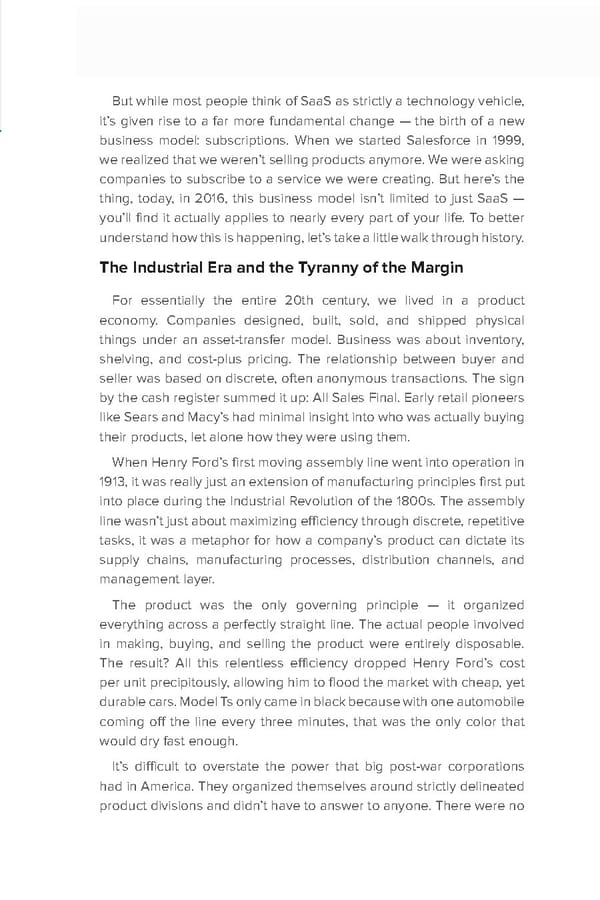Chapter 1 Subscription Economics: How Recurring Revenue Changes Everything But while most people think of SaaS as strictly a technology vehicle, it’s given rise to a far more fundamental change — the birth of a new business model: subscriptions. When we started Salesforce in 1999, we realized that we weren’t selling products anymore. We were asking companies to subscribe to a service we were creating. But here’s the thing, today, in 2016, this business model isn’t limited to just SaaS — you’ll find it actually applies to nearly every part of your life. To better understand how this is happening, let’s take a little walk through history. The Industrial Era and the Tyranny of the Margin For essentially the entire 20th century, we lived in a product economy. Companies designed, built, sold, and shipped physical things under an asset-transfer model. Business was about inventory, shelving, and cost-plus pricing. The relationship between buyer and seller was based on discrete, often anonymous transactions. The sign by the cash register summed it up: All Sales Final. Early retail pioneers like Sears and Macy’s had minimal insight into who was actually buying their products, let alone how they were using them. When Henry Ford’s first moving assembly line went into operation in 1913, it was really just an extension of manufacturing principles first put into place during the Industrial Revolution of the 1800s. The assembly line wasn’t just about maximizing efficiency through discrete, repetitive tasks, it was a metaphor for how a company’s product can dictate its supply chains, manufacturing processes, distribution channels, and management layer. The product was the only governing principle — it organized everything across a perfectly straight line. The actual people involved in making, buying, and selling the product were entirely disposable. The result? All this relentless efficiency dropped Henry Ford’s cost per unit precipitously, allowing him to flood the market with cheap, yet durable cars. Model Ts only came in black because with one automobile coming off the line every three minutes, that was the only color that would dry fast enough. It’s difficult to overstate the power that big post-war corporations had in America. They organized themselves around strictly delineated product divisions and didn’t have to answer to anyone. There were no
 Subscription Economics Page 2 Page 4
Subscription Economics Page 2 Page 4